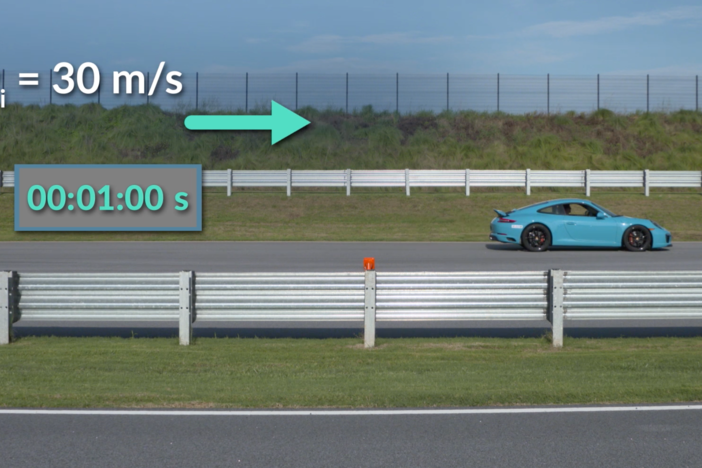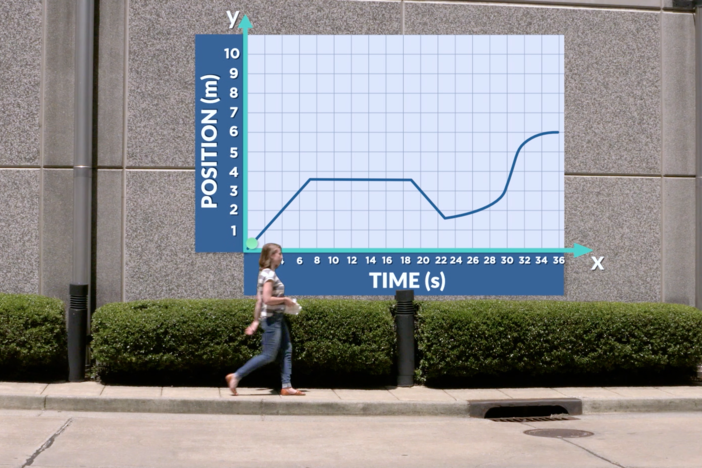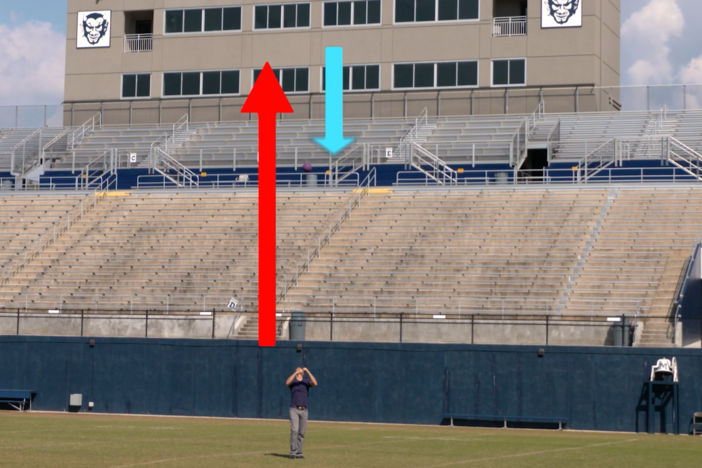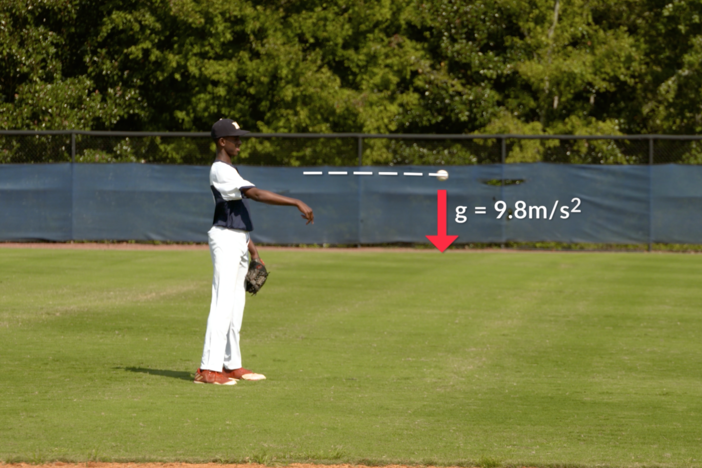Segment F: Relative Velocity
We travel onboard a boat to investigate the topic of relative velocity and to show how all motion is relative.
Segment F: Relative Velocity
We travel onboard a boat to investigate the topic of relative velocity and to show how all motion is relative.
Science
Obtain, evaluate, and communicate information about the relationship between distance, displacement, speed, velocity, and acceleration as functions of time.
Plan and carry out an investigation of one-dimensional motion to calculate average and instantaneous speed and velocity.
- Analyze one-dimensional problems involving changes of direction, using algebraic signs to represent vector direction.
- Apply one-dimensional kinematic equations to situations with no acceleration, and positive, or negative constant acceleration.
-Define relative velocity.
-Understand that motion is relative.
-Calculate the relative velocity of an object in one dimension and two dimensions.
frame of reference - the view of the person or object observing the motion.
Pythagorean Theorem - a theorem that states that the square of the length of the hypotenuse of a right triangle equals the sum of the squares of the lengths of the other two sides.
relative velocity - the vector difference between the velocities of two objects; the velocity of a body with respect to another regarded as being at rest.
resultant - a vector quantity that is equal to the addition of two or more vector components acting at the same point.
The Physics in Motion teacher toolkit provides instructions and answer keys for study questions, practice problems, labs for all seven units of study. GPB offers the teacher toolkit at no cost to Georgia educators.To order your teacher toolkit, complete and submit this form to request the teacher toolkit. You only need to submit this form one time to get materials for all seven units.






